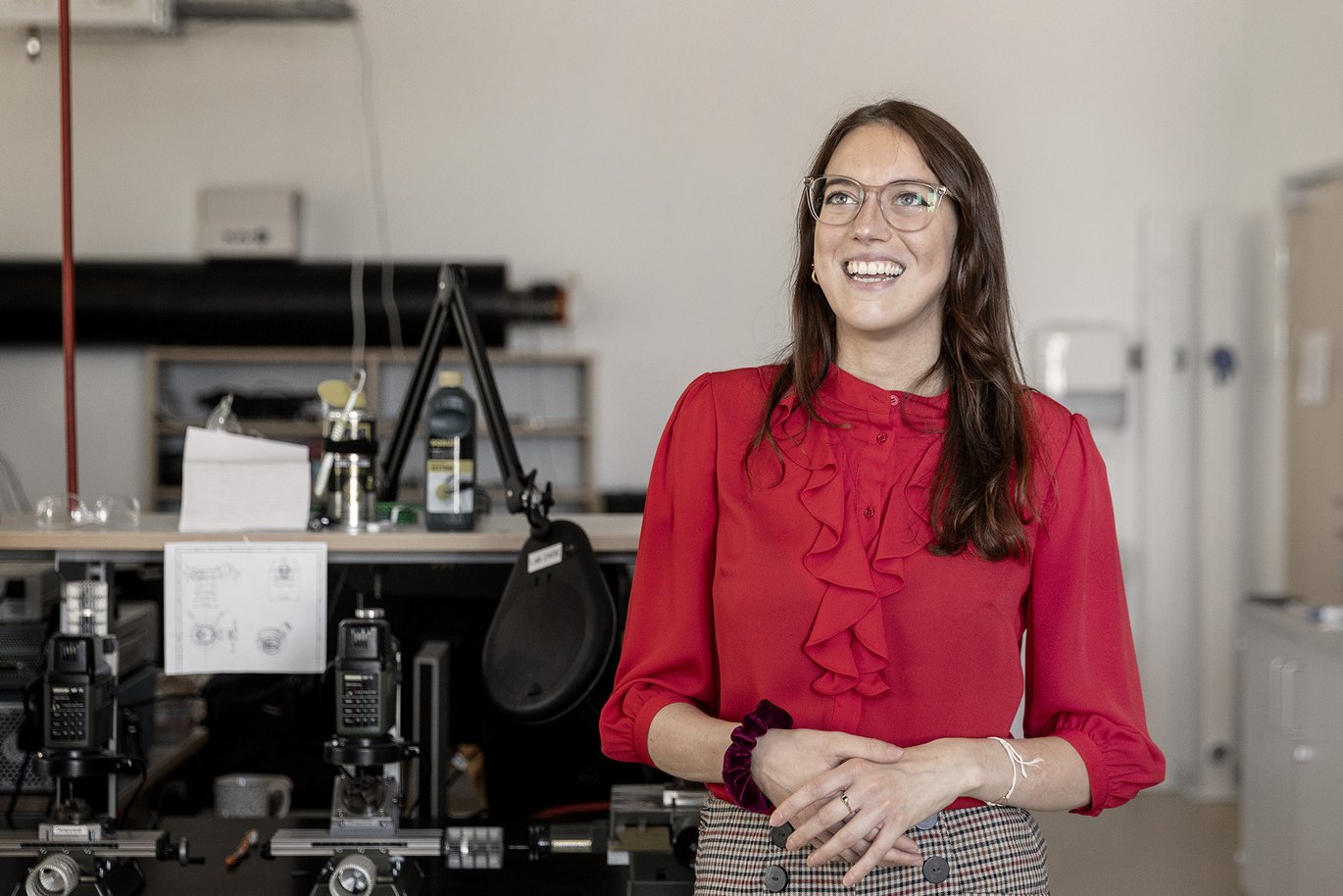PhD student will develop senses in prostheses
Artificial skin filled with electronic neurons and synapses will pave the way for prostheses that allow users to feel the heat of the sun, sand between their toes and perhaps even the pain of falling and grazing a knee. A new research fellow will help make this possible.

Margherita Ronchini, a PhD student from the Department of Electrical and Computer Engineering at Aarhus University, is one of the researchers who, with her deep technological and biological understanding, will help to bring the idea of intelligent prostheses closer to reality.
She has just received a four-year research fellowship grant from the Novo Nordisk Foundation, and over the next few years she will be part of the Stanford University Bio-X research group, led by the award-winning Chinese Professor Zhenan Bao, working to develop so-called iSkin in collaboration with ICELab, led by Professor Farshad Moradi at Aarhus University.
At Stanford University Margherita Ronchini will contribute to an experiment to restore the sense of feeling for amputees by imitating the receptors, neurons and synapses we know from human neural pathways.
"We miss out on so much if we can't feel cold or heat, for example, but we tend to take our ability to move and sense of feeling for granted, and we don’t appreciate all the experiences in being able to feel and move about. Helping give limbs back to those who have lost them, so that their prostheses feel like an integral part of their own body, is a huge motivation for me," says Margherita Ronchini, and continues:
"As things stand today, a prosthesis is often the best substitute for people who have lost a limb. But prostheses have the limitation that they have no sense of feeling, and this can make many everyday situations difficult, for example if you can’t feel heat or cold. This lack of sensory feedback and the inability to make complex movements causes some amputees to give up their prostheses completely."
Will use technology to make a difference for people
People who are currently hampered by their prostheses, and who will ultimately benefit greatly from the iSkin technology are the strongest motivation for Margherita Ronchini.
"No matter how fascinated and intrigued I am academically by the opportunities offered by the new technology, what really drives me is the idea of how a particular group of people can have a better life by using the technology. That's what keeps me going," she explains.
One episode made a particularly strong impression on her and encouraged her to use the technology to make a difference.
"I observed some patients with Parkinson’s disease who had a specially designed device to counteract their shaking. It was crazy to see how, without the device, they shook so violently that they could hardly walk, but with the device they could move about steadily and safely. That’s the closest thing possible to a miracle I have seen."
Dreams of seeing the technology in use
Margherita Ronchini hopes to be able to help make similar technological miracles happen with her research, but the research is not the only driving force for this talented engineer. It is also the dream of seeing her research applied in practice out in the world.
"I'm no entrepreneur, but I really hope that the results we achieve will be integrated and scaled up in prostheses in the future, and in many other situations where the technology can solve problems."
For example, Margherita Ronchini imagines that the technology could also be used in remote operations, whereby a highly specialised surgeon sitting on the other side of the globe could carry out an operation by controlling very sensitive robotic arms that, with the new technology, could react exactly like the surgeon's own hands when carefully manipulating a scalpel.
Learning from nature
Margherita Ronchini wants to change this. With a background as a biomedical engineer, through her studies Margherita Ronchini has been interested in examining nature's own solutions and then transferring them to the products she helps to develop.
"Nature is a skilful engineer. I’m fascinated by exploring nature for these elements of genius created by thousands of years of evolution. Nature is full of really good ideas and solutions, and we can try to imitate them," she says enthusiastically.
So far, components of the technology have been successfully tested on mice and there has been experiments with a cockroach involving the type of sensors developed by the group at Stanford that Margherita Ronchini is going to collaborate with. Much is still to be done before the first humans can try the first prototype prostheses incorporating iSkin.
Completely changes our understanding of prosthetics
Therefore, the two professors leading the project are looking forward to having Margherita Ronchini join their team and bring the new technology into life.
“I look forward to working with Margherita Ronchini to move this technology closer to human”, says Professor Zhenan Bao.
“We also at ICELab are looking forward to a close collaboration with the Bio-X research group to develop further our brain-inspired computing system integrating into prosthesis through the iSkin project “, adds Professor Farshad Moradi who is the PhD supervisor for Margherita Ronchini.
Facts about iSkin
The design of iSkin (Intelligent Skin) is a closed loop system that facilitates sensory perception, processing and stimulation of the remaining nerve fibres by communicating sensory information to the brain and provoking a conscious experience of touch. The idea is that iSkin will be a very thin flexible and elastic film with built-in sensors that is grafted onto a prosthesis.
By introducing a tactile artificial nervous system to the prosthesis, inspired by the body's own neural pathways, the user will be able to make far more complex movements. Furthermore, the user will be able to consciously perceive an artificial body part and thus feel a greater sense of ownership of it, and the technology may even relieve the phantom pain that is so debilitating for many who lose a limb.
